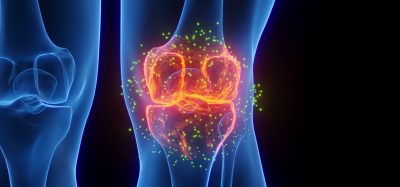Novel molecule restores lost connections in spinal cords and brains of mice
Posted: 14 September 2020 | Victoria Rees (Drug Target Review) | No comments yet
Researchers have developed a molecule that can restore lost connections in the spinal cords and brains of mice with cerebellar ataxia, Alzheimer’s disease and spinal cord injury.


Researchers have demonstrated that a molecule they created can restore lost connections in the spinal cords and brains of mice with neurological disorders including cerebellar ataxia, Alzheimer’s disease and spinal cord injury.
The research involved scientists in the UK Medical Research Council Laboratory of Molecular Biology (MRC LMB) and collaborators from Japan and Germany.
Inspired by the way brain cells usually connect, the researchers created a synthetic “molecular bridge” that allows novel interactions and opens the way to numerous applications in neuronal circuit repair and remodelling. The team say the design can be extended to connect other cell types or could be used to remove connections in other disorders such as epilepsy.
The researchers explain cerebellin-1 is a molecule that links neuronal cells that send signals with those that receive them, transmitters and receivers, at special points of contact called synapses. This is why cerebellin-1 and related proteins, known as “synaptic organisers”, are essential to help establish the vast communication network that underlies all nervous system functions.
The team wondered if they could cut and paste structural elements from different organiser molecules to generate new ones with different binding properties. One of these, called CPTX, was produced and found to have an excellent ability to organise neuronal connections in cell cultures.
Radu Aricescu, of the MRC Laboratory of Molecular Biology, said: “Damage in the brain or spinal cord often involves loss of neuronal connections in the first instance, which eventually leads to the death of neuronal cells. Prior to neuronal death, there is a window of opportunity when this process could be reversed in principle. We created a molecule that we believed would help repair or replace neuronal connections in a simple and efficient way. We were very much encouraged by how well it worked in cells and we started to look at mouse models of disease or injury where we see a loss of synapses and neuronal degeneration.”
Following the successful cell culture experiments, the team tested their molecule’s effect in mice with cerebellar ataxia. Injecting their molecule into the brains of these mice, the team observed the neuronal tissue repair, as well as improved motor performance. Further encouraged by these results, they explored whether similar effects could be observed in other mouse models of neuronal loss and degeneration, such as Alzheimer’s disease and spinal cord injury.
The team found that the treatment was effective in all the animal models, with restored neuronal connections and improvements in memory, co-ordination and movement tests. They saw the greatest impact in spinal cord injury where motor function was restored for at least seven to eight weeks following a single injection into the site of injury. In the brain, the positive impact of injections was observed for a shorter time, down to only about one week in the ataxia model. As a result, new and more stable versions of CPTX are currently being developed.
“There are many unknowns as to how synaptic organisers work in the brain and spinal cord, so we were very pleased with the results we saw. We demonstrate that we can restore neural connections that send and receive messages, but the same principle could be used to remove connections. The work opens the way to many applications in neuronal repair and remodelling: it is only imagination that limits the potential for these tools,” added Aricescu.
The results can be found in Science.
Related topics
Central Nervous System (CNS), Drug Leads, Drug Targets, Hit-to-Lead, Neurons, Neurosciences, Research & Development, Target Molecule, Targets, Therapeutics
Related conditions
Alzheimer's disease (AD), cerebellar ataxia
Related organisations
Medical Research Council (MRC), Medical Research Council Laboratory of Molecular Biology (MRC LMB)
Related people
Radu Aricescu








